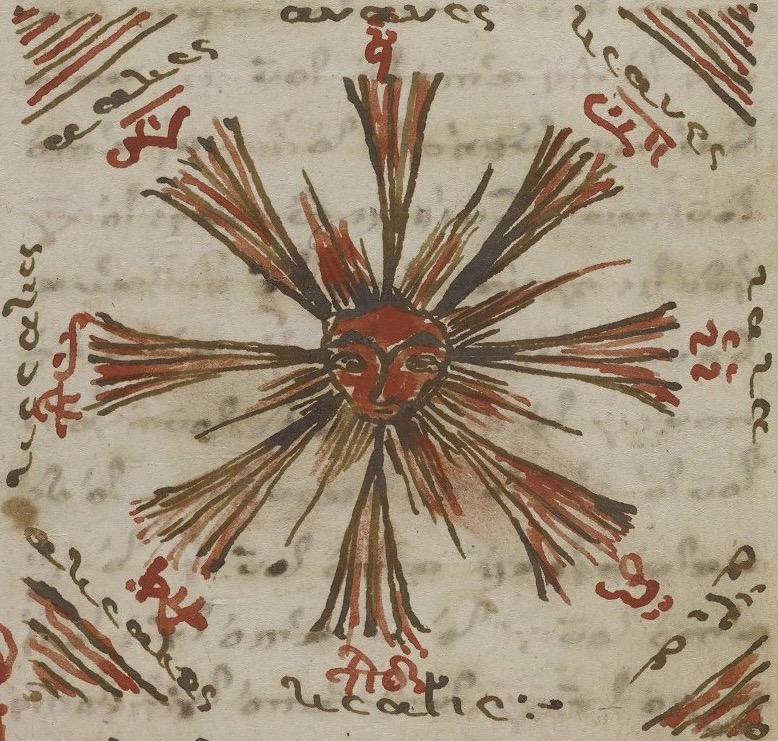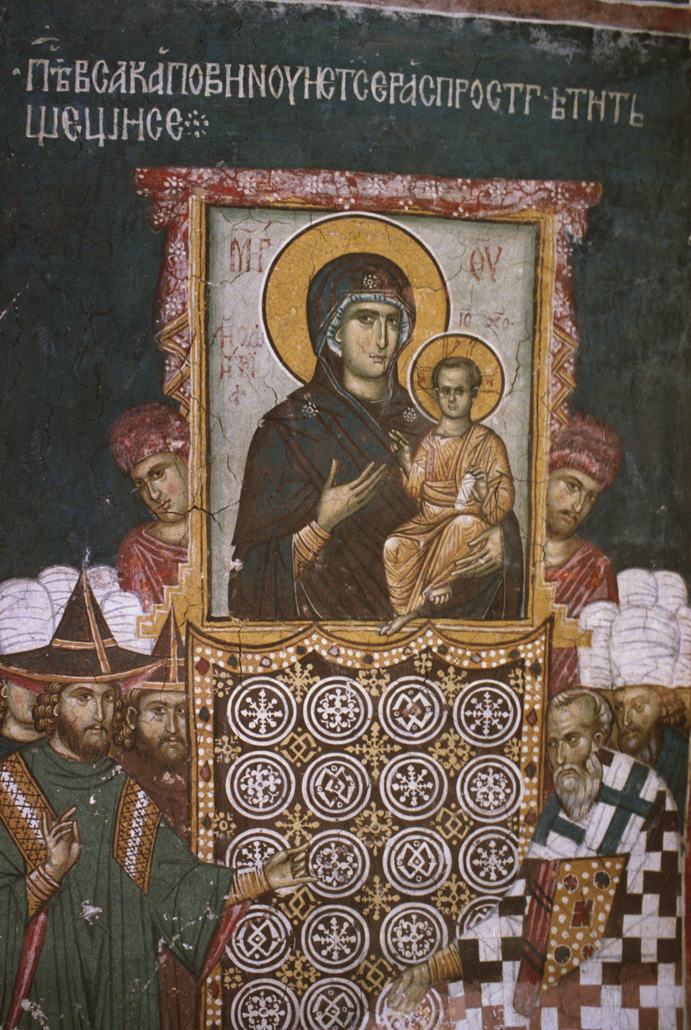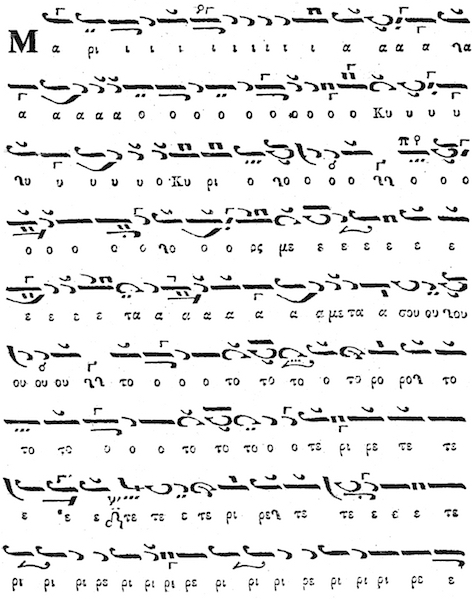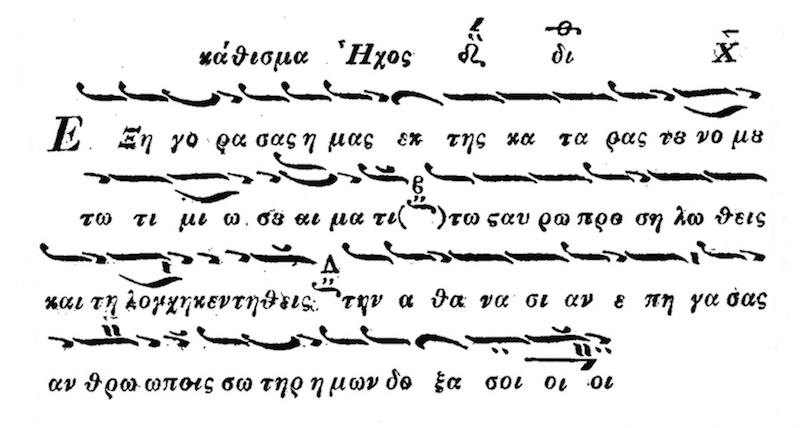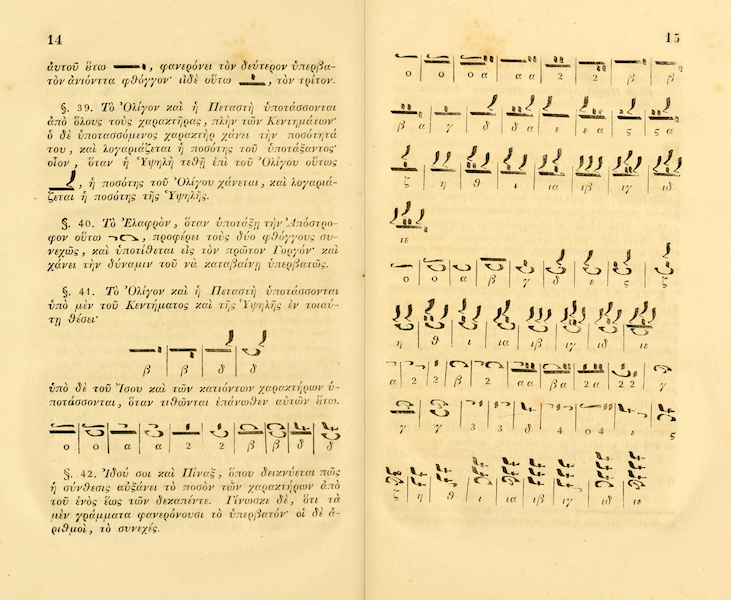Episode Notes
Extending from Western Europe to Asia Minor and North Africa to the Middle East, the Byzantine Empire was one of the most influential political, commercial, and cultural forces in the Mediterranean basin for more than a millennium. Its vast territory encompassed regions with diverse cultural, religious, and linguistic traditions. Merchants, artisans, travelers, and diplomats moved through Byzantine lands along international and regional trade and travel routes, many destined for the Byzantine capital, Constantinople, the chief entrepôt between Europe and Asia. The diversity of its population and the movement of people and material goods through its territory both informed Byzantine culture and circulated it to Byzantium’s Christian neighbors, the Islamic world, and Europe.
Like all forms of Byzantine culture, its music reflects the cosmopolitan nature of the Empire. The influence of diverse poetic and musical traditions, such as Jewish sacred music, Syriac chant, and western polyphony, are found in Byzantine liturgical poetry and musical manuscripts, and traces of Byzantine music are reflected in Western chant, Russian and Slavonic church music, and the many musical traditions of the Mediterranean world. Today, Byzantine chant is performed as part of the liturgy of the Greek-speaking Eastern Orthodox Churches. Reverberations of Byzantine music are also present in Greek folk music, popular musical genres, such as Rebetiko, and in the work of composers from Rachmaninoff and Tchaikovsky to Arvo Pärt and John Tavener.
In this episode, our host Dr. Grammenos Karanos introduces Byzantine chant. Dr. Karanos sketches its defining characteristics, in particular its rhythmic structure, modal system, which shares much in common with Balkan, Near Eastern, and Middle Eastern music, microtonality, and formulaic compositional technique.
One of the many musical selections featured in this episode is Τῇ Ὑπερμάχῳ (To You the Champion Leader) from the Akathist (Akathistos) Hymn, an anonymous, undated hymn considered to be a masterpiece of Byzantine hymnography. The hymn is written in praise of the Virgin Mary. According to tradition, the Akathistos hymn commemorates the siege of Constantinople by the Avars and Slavs in 626 when the Virgin interceded to protect the city. That same evening the Patriarch Sergius led an all-night service of thanksgiving in the church of the Blachernai. During subsequent sieges of the city, an icon of the Virgin was carried in procession around the walls. The oldest sources associate the hymn with the Feast of the Annunciation. Today, the hymn is chanted in part or in whole during the Great Lent of the Greek Orthodox Church.
During the fourteenth century, the Akathistos hymn became a popular subject in Byzantine art and the art of its Christian neighbors. Illustrations of the hymn are depicted in manuscript illumination, frescoes, and icons.
Τῇ Ὑπερμάχῳ (To You the Champion Leader) is a secondary koukoulion (introductory stanza) to the Akathistos hymn. The words of the hymn are inscribed in the modern church of the Blachernai in Istanbul where, according to tradition, the hymn was first chanted. The original church, which became Constantinople’s most famous Marian shrine, is said to have been built by the Empress Pulcheria (c. 450) on the site of a spring. Later, a reliquary chapel was added to house the Virgin’s robe. Several miracle-working icons of the Virgin are associated with the Blachernai church. The most famous of these were a marble image of the Virgin from whose hands flowed holy water and an icon covered by a veil that miraculously lifted every Friday evening. The Byzantine structure was damaged by numerous fires, the last in 1434 destroyed the building. The modern church, constructed in 1867, sits on the site of the spring over which Pulcheria’s church was built.
Explore Further
Cavarnos, Constantine. Byzantine Chant: A Sequel to the Monograph Byzantine Sacred Music, Containing a Concise Discussion of the Origin of Byzantine Chant, Its Modes, Tempo, Notation, Prologoi, Prosomoia, Style, and Other Features. Belmont, MA: Institute for Byzantine and Modern Greek Studies, 1998.
Cavarnos, Constantine. Byzantine Sacred Music: The Traditional Music of the Orthodox Church, Its Nature, Purpose, and Execution. Belmont, MA: Institute for Byzantine and Modern Greek Studies, 1956.
Conomos, Dimitri. “A Brief Survey of the History of Byzantine and Post-Byzantine Chant.” October 16, 2012. Archdiocesan School of Byzantine Music.
Conomos, Dimitri. “Early Christian and Byzantine Music: History and Performance.” November 15, 2012. Archdiocesan School of Byzantine Music.
Conomos, Dimitri E. “Music.” In The Oxford Dictionary of Byzantium. Oxford University Press, 1991; published online 2005.
Conomos, Dimitri. “Orthodox Byzantine Music.” November 15, 2012. Archdiocesan School of Byzantine Music.
Jeffreys, Elizabeth M. and Robert S. Nelson. “Akathistos Hymn.” In The Oxford Dictionary of Byzantium. Oxford University Press, 1991; published online 2005.
Karanos, Grammenos, “A Brief Overview of the Psaltic Art.” October 16, 2012. Archdiocesan School of Byzantine Music.
Levy, Kenneth and Christian Troelsgård. “Byzantine Chant.” In Grove Music Online. Oxford Music Online. Oxford University Press, 2007–. Article updated January 20, 2016.
Ševčenko, Nancy Patterson. “Icons in the Liturgy.” Dumbarton Oaks Papers 45 (1991): 45–57, esp. 48–50.
Wellesz, Egon. A History of Byzantine Music and Hymnography. 2nd ed. rev. Oxford: Clarendon Press, 1961.
Gallery
About the Host
Grammenos Karanos joined the faculties of Hellenic College Holy Cross in 2007 and is currently Assistant Professor of Byzantine Liturgical Music. Since 1998 he has served as protopsaltis (chief cantor) of churches in the greater Boston area and is currently protopsaltis of the Holy Cross Chapel and director of Holy Cross St. Romanos the Melodist Byzantine Choir. Dr. Karanos studied Byzantine music under Photios Ketsetzis, Archon Protopsaltis of the Greek Orthodox Archdiocese of America, and received a Certificate of Byzantine Music Studies with highest distinction in 2002. He completed his studies in 2011 under the guidance of world-renowned musicologist Gregorios Stathis and was awarded a Ph.D. in Byzantine Musicology and Psaltic Art at the University of Athens, Greece. In his doctoral dissertation titled “The Kalophonic Heirmologion,” Professor Karanos examined a previously underinvestigated and misunderstood post-Byzantine para-liturgical genre with a focus on its historical development and musical structure and content. His primary research interests include the morphology and evolution of Byzantine and post-Byzantine chant, the history and exegesis of neumatic notational systems, the dissemination of the psaltic tradition outside the Greek-speaking world, and the relationship between religious and secular musical traditions in the Balkans. At Hellenic College Holy Cross, Dr. Karanos teaches courses in Byzantine chant (beginner through advanced levels) and history of music.
Episode Credits
Musical selections in order of appearance
Τῇ Ὑπερμάχῳ Στρατηγῷ (To you, the Champion Leader). Mode plagal IV. Secondary Introductory Stanza to Akathist (Akathistos) Hymn. Traditional Melody. [“Τη Υπερμάχω Στρατηγώ - To thee, the Champion Leader.” YouTube video, 1:42. Posted July 3, 2008, by “NikephorosOuranos.” https://youtu.be/bfhYMmx-ySQ.]
Βασιλεὺ Οὐράνιε (Heavenly King). Mode plagal II. Hymn to the Holy Spirit. Setting by Photios Ketsetzis. Performed by Holy Cross St. Romanos the Melodist Choir Byzantine Choir and DÜNYA Ensemble. [“Vasilef Ouranie.” From A Sacred Music Celebration: Greek Orthodoxy and Turkish Sufism. Greek-Turkish Choir, DÜNYA Ensemble, and special guests Photios Ketsetzis, Şenol Filiz, and Birol Yayla. Futura Productions, Roslindale, MA, 2011, 2 compact discs.]
Β΄ Στάσις Τυπικῶν (Second Stanza of Typika). Mode II. Psalm 145 as chanted in the Divine Liturgy. Performed by Harilaos Taliadoros and Thrasyvoulos Stanitsas. [“Β΄ΣΤΑΣΗ ΤΩΝ ΤΥΠΙΚΩΝ ΗΧΟΣ Β΄ ΣΤΑΝΙΤΣΑΣ ΤΑΛΙΑΔΩΡΟΣ.” YouTube video, 3:27. Posted December 21, 2012, by “vasta1956.” https://youtu.be/WThLK7FCLrI.]
“C Major Scale For Piano.” YouTube video, 1:36. Posted January 23, 2013, by “DCGraf1.” https://youtu.be/QDWKzG5oaog. 00:07–00:21
“C - minor Scale with Arpeggio.” YouTube video, 1:16. Posted May 7, 2012, by “csellobarnabas93.” https://youtu.be/CQZGlrqxyt4. 00:00–00:24.
Τρισάγιος Ὕμνος (Thrice-Holy Hymn). Mode varys. Setting by Thrasyvoulos Stanitsas. Performed by Demetrios Galanis. [“Δημήτρης Γαλάνης - “Άγιος Αθάνατος” από το “Δύναμις...” του Θρασ. Στανίτσα.” YouTube video, 2:09. Posted May 31, 2015, by “B. Domesticus.” https://youtu.be/KPBeY38aDPU.]
Μὴ τῆς φθορᾶς (Conceiving Without Knowing Corruption). Mode varys. Hymn to the Theotokos for the feast of Pentecost. Performed by Panteleimon Kartsonas. [“Mη της φθοράς Ήχος Βαρύς Γέρων Παντελεήμων Κάρτσωνας.” YouTube video, 3:24. Posted May 28, 2015, by “GEORGE DEN SOY LEO.” https://youtu.be/zAl7ja1rzLE.]
Κράτημα Τοτοτο (Kratima Tototo). Mode III. Excerpt from Θεοτόκε Παρθένε (O Theotokos and Virgin) by Petros Bereketis. Performed by Panagiotis Neochoritis. [“Μαρία ο Κύριος μετά σου - Παναγιώτης Νεοχωρίτης.” YouTube video, 3:31. Posted October 10, 2011, by “Roman Empire.” https://youtu.be/T_vsnBwjoqg. 1:35–3:31.
Ἐξηγόρασας ἡμᾶς (You have redeemed us). Mode IV. Performed by Holy Cross St. Romanos the Melodist Choir Byzantine Choir. [“Dismissal Hymn (Mode IV).” From All Creation Trembled: Orthodox Hymns of the Passion Service. Holy Cross St. Romanos the Melodist Choir Byzantine Choir. Hellenic College Holy Cross, March 31, 2014, 1 compact disc.]
Images
Diagrammatic depiction of the relationship between the tones of the octoechos, detail, from Anthologion, c. 1700. Rare Book & Manuscript Library, University of Pennsylvania, Philadelphia, UPenn Ms. Codex 140, f. 9r.
Fresco of the Akathistos Hymn, strophe 20 (detail), 14th century, Dečani Monastery, Kosovo.
Inscription of To You the Champion Leader above the Hagiasma, church of the Virgin of Blachernai, Istanbul, modern church, 1867.
Musical score for Τρισάγιος Ὕμνος (Thrice-Holy Hymn). From Ἐπίτομος Λειτουργία by Charilaos A. Taliadōros, 42. 5th Edition. Thessaloniki, 2003.
Musical score for Κράτημα Τοτοτο (Kratima Tototo). Excerpt from Θεοτόκε Παρθένε (O Theotokos and Virgin) by Petros Bereketis. From Πανδέκτη τῆς ἱερᾶς ὑμνωδίας τοῦ ὅλου ἐνιαυτοῦ by Iōannou Lampadariou and Stephanou A. Domestikou. Vol. 1, Περιέχων τὰ μαθήματα τοῦ Ἑσπερινοῦ, 224. Constantinople, 1850.
Musical score for Ἐξηγόρασας ἡμᾶς (You have redeemed us). From Σύντομον Δοξαστάριον Πέτρου Λαμπαδαρίου τοῦ Πελοποννησίου, 362. Bucharest, 1820. The Digital Library of Modern Greek Studies, http://anemi.lib.uoc.gr/metadata/f/a/4/metadata-39-0000474.tkl.

